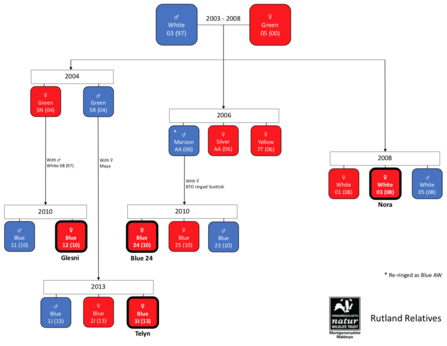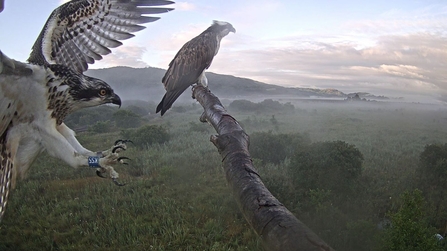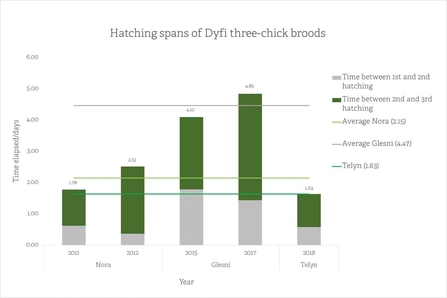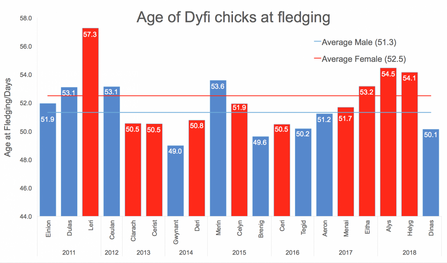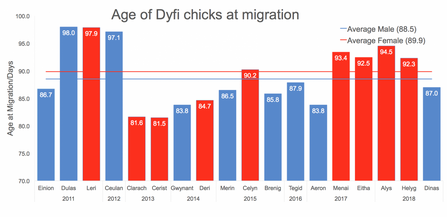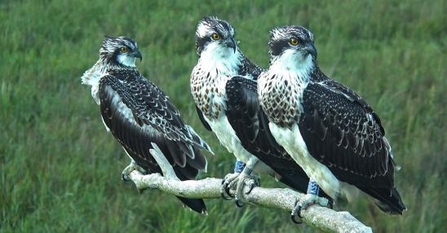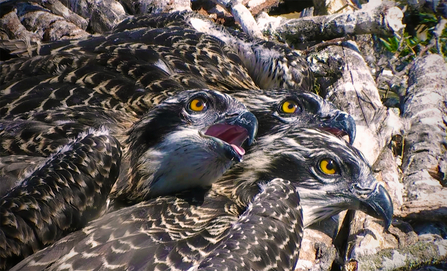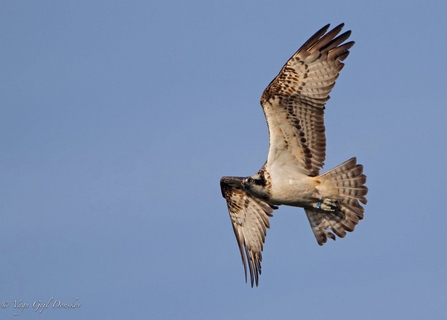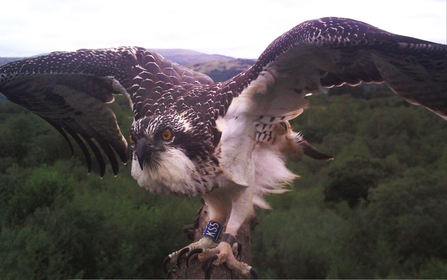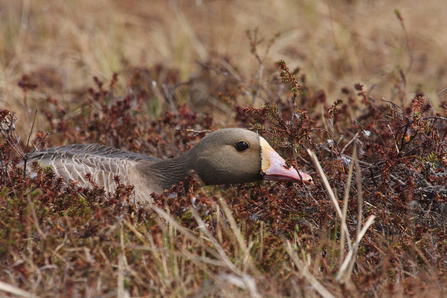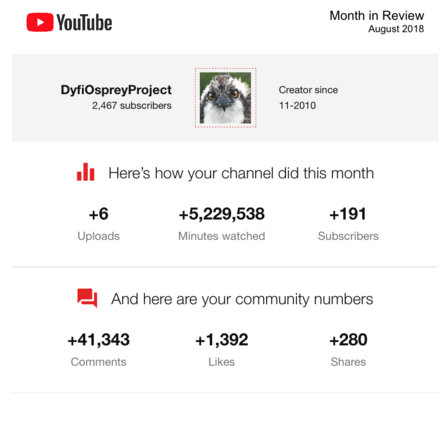DOP has ended for the season
We closed the doors for the 166th and last time on DOP 2018 on Friday, 7th September - our tenth season overall. And what a season we've had.
Monty has bred for eight of those 10 years, the first two with Nora and the last five with Glesni who sadly did not return this year. Telyn, Monty's third consecutive Rutland-born female partner, emulated exactly what Nora had done in 2011 and produced three eggs, all of which hatched, fledged and migrated, and just like Nora, achieved this as a first-time mother.
We mourned the loss of Glesni in April - here is her Tribute video if you missed it:

